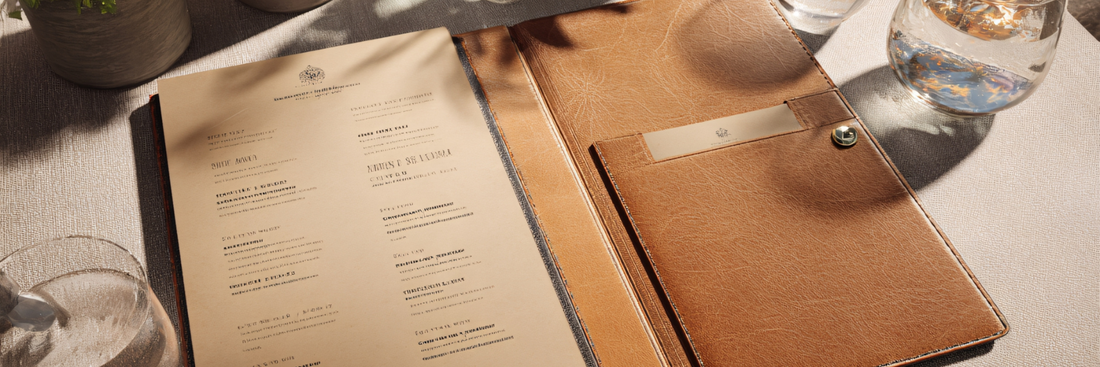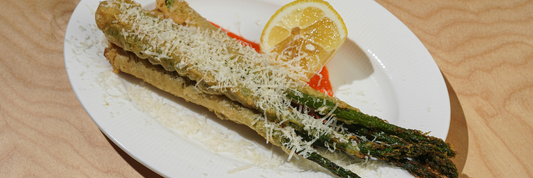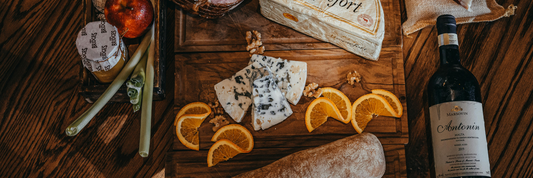Have you ever wondered why customers tend to choose certain dishes on your menu even when they hadn’t planned to? It’s not luck. It’s psychology.
In the world of food and beverage (F&B), the way a menu looks, feels, and flows has a powerful influence on what and how much customers order.
For restaurant owners, cafés, and F&B brands, understanding menu design psychology isn’t just about aesthetics it’s about crafting an experience that nudges customers toward your most profitable and signature dishes.
At Kimecopak, we’ve seen how thoughtful branding and design from your eco-friendly packaging to your dine-in menu can shape perception and build loyalty. Let’s explore how strategic menu design can turn ordinary choices into irresistible orders.
-
Livestreaming in Restaurants: Should You Try It and How to Make It Engaging?
-
Gamification in F&B: Stamp Collection Mini-Games to Boost Customer Loyalty
-
Food Photography Optimization: Why Natural Lighting Makes Dishes Look Better
1. The Power of the First Impression

Your menu is more than a list of dishes it’s your silent salesperson.
When customers open it, their eyes don’t move randomly. Studies show that people naturally look at the top-right section first the “sweet spot” for high-margin dishes.
Place your best items strategically in these visual hotspots. Use subtle design cues like boxes, icons, or tasteful highlights to guide their attention without making it obvious.
Quick Tips:
- Place signature dishes where the eyes land first (top-right or center).
- Avoid clutter. A clean, airy layout builds trust and suggests quality.
- Keep the number of items limited to reduce decision fatigue.
2. Color and Emotion in Menu Design
Colors evoke emotions and emotions drive hunger.
Warm tones like red and orange subtly stimulate appetite, while green suggests freshness and health. Use these colors thoughtfully, aligned with your brand’s personality.
For sustainable or wellness-focused brands, earthy tones and minimalist design can communicate authenticity and care perfect for cafés or restaurants promoting eco-conscious values.

3. Descriptive Language That Sells
Words matter as much as visuals.
A simple “chocolate cake” sounds flat, but “rich Belgian chocolate cake with molten center” paints a delicious image. Use sensory and emotional language to make dishes feel indulgent, nostalgic, or comforting.
Example phrases that boost appetite:
- “Slow-cooked” instead of “boiled”
- “Locally sourced” instead of “fresh”
- “Signature” instead of “special”
Just remember: authenticity is key. Overpromising creates disappointment; genuine storytelling builds loyalty.
4. Pricing Psychology: Subtle but Effective
How you display prices can influence perception.
Avoid dollar signs ($) they trigger spending awareness. Instead, list the number alone (e.g., 12 instead of $12).
Group prices strategically:
- Use price bracketing place premium dishes near mid-range ones to make the latter seem like a better deal.
- Avoid listing items in a straight column; it encourages price comparison. Instead, blend pricing naturally into descriptions.
5. Layout and Readability
A well-structured menu reduces decision stress and increases satisfaction. Divide it into logical sections appetizers, mains, desserts, drinks and use hierarchy in typography to emphasize the most profitable items.
Checklist for an effective layout:
- Use readable fonts and sufficient white space.
- Include a mix of text, icons, or small images (but avoid too many pictures).
- Ensure consistency in style, tone, and branding.

6. Sustainability as a Design Language
In today’s eco-conscious dining scene, sustainability itself is part of your story. The design of your menu its paper texture, typography, and color should reflect your values.
At Kimecopak, we help restaurants align their packaging and printed materials with their brand identity. Choosing eco-friendly menu paper, soy-based inks, or recycled packaging not only reduces waste but also strengthens brand integrity in the eyes of customers.
When your design tells a sustainable story, every dish feels more meaningful.
7. Bring It All Together

Effective menu design isn’t manipulation it’s storytelling through psychology. From font size to layout flow, every element guides customers gently toward the experience you’ve crafted.
By applying these principles, restaurants can:
- Increase average order value.
- Boost sales of signature or high-margin items.
- Build stronger emotional connections with guests.
And when paired with eco-friendly, thoughtfully branded packaging from Kimecopak, your customer experience extends beyond the table all the way home.
FAQ
1. Why is menu design psychology important for restaurants?
Because it directly affects how customers perceive value and make choices. A well-designed menu can subtly increase sales without changing the dishes themselves.
2. What colors make customers feel hungry?
Warm colors like red, orange, and yellow stimulate appetite, while green creates a sense of freshness and health.
3. Should I include pictures on my menu?
Yes, but sparingly. One or two high-quality images can be effective, but too many make your menu look cheap or overwhelming.
4. How can sustainability be reflected in menu design?
Use recycled paper, minimalist layouts, and eco-friendly inks. Align your physical materials with your brand’s sustainability message a philosophy Kimecopak fully supports.
Want to elevate your menu and brand experience with eco-friendly materials that reflect your restaurant’s values?
👉 Explore Kimecopak Membership today and enjoy exclusive perks, sustainable packaging solutions, and professional design support.
Learn more at: https://www.kimecopak.ca/pages/membership
-
LEARN MORE about How "Subscribe for a Happy Life" will benefits your business HERE!
-
LEARN MORE about Kim Vu, sharing on the challenges she faced as a former restaurant owner, and how she overcame them to create KimEcopak HERE!




